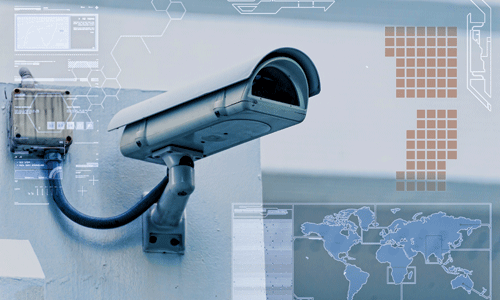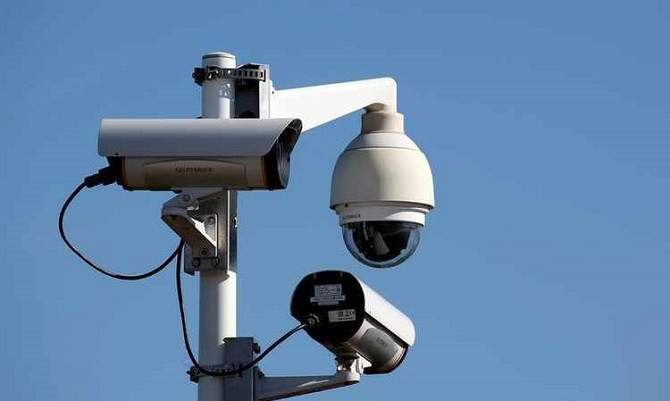The Future of ALPR Camera Technology: Advancements and Innovations
In the fast-evolving landscape of surveillance technology, few innovations have made as significant an impact as Automatic License Plate Reader (ALPR) cameras. These sophisticated devices, also known as license plate reader cameras or license plate cameras, have transformed the way we manage security, law enforcement, and transportation systems. As we peer into the future, the trajectory of ALPR cameras(ANPR) promises even more remarkable advancements and innovations, reshaping the landscape of surveillance and data analytics.
Table of Contents
Understanding ALPR Cameras

At their core, ALPR cameras are a fusion of optical character recognition (OCR) technology and high-speed imaging systems. They are designed to capture images of license plates swiftly and accurately. Once captured, specialized software interprets these images, extracting alphanumeric characters to identify and record license plate numbers. This process occurs in real time, making ALPR cameras invaluable tools for various sectors.
Current State of ALPR Technology
As of today, ALPR technology has demonstrated its efficacy across a spectrum of applications. Law enforcement agencies, for instance, rely on ALPR cameras to locate stolen vehicles, enforce traffic laws, and aid in criminal investigations. These cameras are instrumental in Amber Alerts and other public safety initiatives, enabling rapid identification of vehicles involved in criminal activities.
In the realm of transportation management, ALPR cameras play a vital role in monitoring traffic flow, managing toll collections, and enforcing parking regulations. They also contribute to urban planning efforts by providing valuable data on traffic patterns and vehicle movements. Furthermore, commercial entities utilize ALPR data for customer relationship management, market analysis, and enhancing security measures.
Advancements on the Horizon
Looking ahead, the evolution of ALPR cameras is poised to bring about transformative changes, driven by technological advancements and innovative applications. Here’s a deeper dive into the future developments shaping the landscape of ALPR technology:

1. Artificial Intelligence Integration:
The integration of advanced artificial intelligence (AI) algorithms will revolutionize ALPR technology, enhancing license plate recognition accuracy and efficiency. AI-powered systems will adapt to various environmental conditions and plate designs, ensuring robust performance across diverse scenarios.
Additionally, AI algorithms will enable ALPR cameras to perform advanced analytics tasks, such as vehicle classification, anomaly detection, and predictive modeling. These capabilities will empower law enforcement agencies and transportation authorities to derive deeper insights from ALPR data, leading to more effective decision-making and resource allocation.
2. Real-Time Data Analytics:
Future ALPR cameras will offer enhanced real-time data analytics capabilities, enabling instant insights into traffic patterns, vehicle movements, and suspicious activities. By leveraging advanced analytics algorithms, these cameras can detect and respond to security threats in real-time, improving situational awareness and incident response.
Moreover, real-time analytics will facilitate proactive measures such as predictive maintenance of infrastructure, dynamic traffic management, and personalized customer services. As ALPR systems evolve into intelligent surveillance platforms, they will become indispensable tools for creating safer, more efficient urban environments.
3. Cloud Connectivity:
Cloud connectivity will unlock new possibilities for ALPR technology, enabling seamless data sharing and collaboration between multiple agencies and stakeholders. By leveraging cloud-based infrastructure, ALPR systems can access vast databases of vehicle information, facilitating faster identification and tracking of vehicles across jurisdictions.
Furthermore, cloud connectivity will enable scalable deployment of ALPR solutions, allowing organizations to adapt to changing requirements and scale their surveillance capabilities as needed. This flexibility will be particularly beneficial for large-scale deployments in smart cities, transportation hubs, and critical infrastructure.

4. Integration with IoT Devices:
ALPR cameras will integrate with the Internet of Things (IoT) ecosystem to create interconnected smart city environments. By collaborating with IoT devices such as traffic lights, surveillance cameras, and vehicle sensors, ALPR systems can optimize traffic flow, reduce congestion, and enhance overall urban mobility.
For example, ALPR cameras can communicate with traffic signals to dynamically adjust signal timings based on traffic conditions, minimizing delays and improving traffic flow. Similarly, integration with vehicle sensors can enable ALPR systems to provide real-time parking availability information, helping drivers find parking spaces more efficiently.
5. Enhanced Privacy Measures:
Addressing concerns regarding data security and privacy will be paramount in the development of future ALPR systems. Advanced encryption protocols, anonymization techniques, and data access controls will be implemented to safeguard sensitive information and ensure compliance with privacy regulations.
Furthermore, transparent data governance frameworks and public engagement initiatives will foster trust and accountability in the use of ALPR technology. By prioritizing privacy and ethical considerations, organizations can harness the benefits of ALPR cameras while respecting individual rights and liberties.
6. Environmental Adaptability:
Future ALPR cameras will exhibit enhanced environmental adaptability, capable of operating effectively in diverse weather conditions and lighting environments. Advanced imaging sensors, thermal imaging technology, and machine learning algorithms will enable ALPR systems to maintain high levels of performance and reliability under challenging conditions.
These capabilities will be particularly valuable in outdoor applications where environmental factors such as rain, snow, and glare can impact camera performance. By ensuring consistent and reliable operation, ALPR cameras will enhance the resilience and effectiveness of surveillance systems in various settings.
7. Autonomous Vehicle Integration:
As autonomous vehicles become increasingly prevalent, ALPR cameras will play a crucial role in their integration and regulation. These cameras will enable autonomous vehicles to identify and communicate with other vehicles, pedestrians, and infrastructure elements, facilitating safe and efficient navigation in complex environments.
ALPR cameras will also assist authorities in monitoring and regulating autonomous vehicle operations, ensuring compliance with traffic laws, safety regulations, and vehicle registration requirements. By providing real-time vehicle identification and tracking capabilities, ALPR systems will enhance the safety and security of autonomous transportation systems.
The Impact of Future ALPR Innovations

The evolution of ALPR technology promises to revolutionize the way we manage security, transportation, and urban infrastructure. By harnessing advanced AI algorithms, real-time analytics, and cloud connectivity, ALPR cameras will become more than just passive surveillance tools—they will evolve into intelligent systems that empower organizations to make data-driven decisions and proactively address emerging challenges.
From enhancing public safety and security to optimizing traffic flow and improving urban mobility, the potential applications of future ALPR innovations are vast and far-reaching. However, realizing this potential will require collaboration, innovation, and a commitment to ethical and responsible use of technology.
As we embark on this journey towards the future of ALPR cameras, let us embrace the opportunities it presents to create safer, more efficient, and more livable cities for all. By leveraging the power of technology for the greater good, we can build a future where security is strengthened, privacy is respected, and communities thrive.
Conclusion:
In conclusion, the evolution of ALPR cameras represents a testament to the relentless pursuit of innovation in the field of surveillance technology. From their humble origins as niche law enforcement tools to their current status as indispensable assets in transportation management and beyond, ALPR cameras have continually pushed the boundaries of what is possible. With advancements in accuracy, integration with artificial intelligence, cloud connectivity, and enhanced privacy measures, ALPR systems are poised to play an increasingly vital role in shaping the future of security, mobility, and urban planning. As we stand on the cusp of a new era of technological progress, the potential of ALPR cameras to transform our world for the better is limited only by our imagination.

